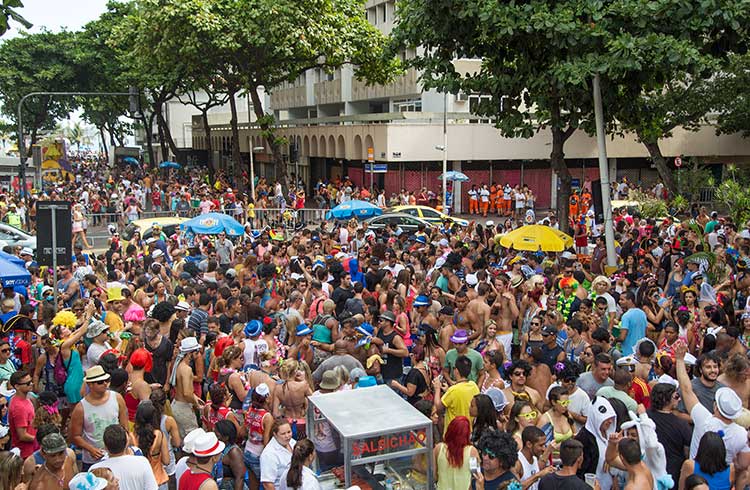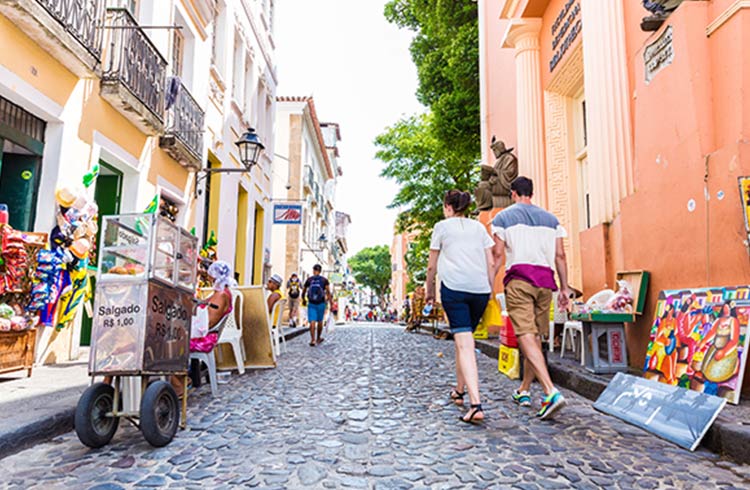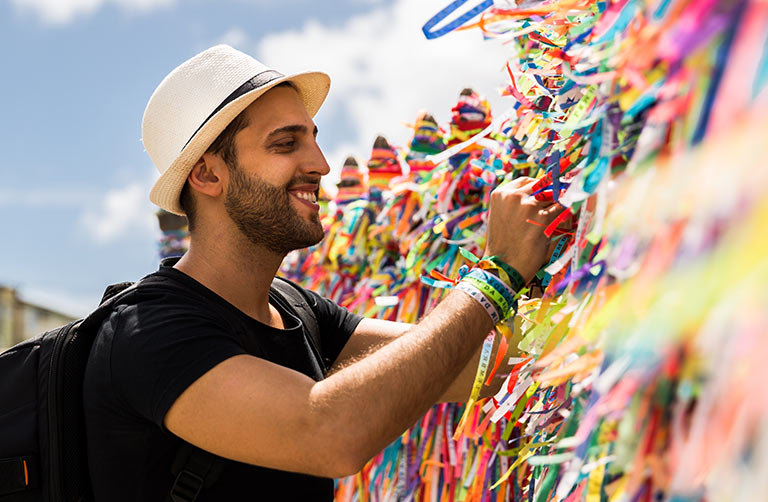How to Survive Carnival in Brazil: Travel Safely in Rio
Coronavirus (COVID-19) and travel: The situation around the world is changing dramatically. Various governments have changed their travel warnings to restrict travel during this time. To understand how this may impact cover under your policy, please go to our FAQs and select your country of residence.
For the latest travel warnings and alerts around the world, read about lockdowns and border restrictions.
Every year at the end of February, travelers flock to Brazil to witness the outrageously elaborate festivities during Carnival. Our safety expert shares his advice on how to survive the world's biggest party.
Shares
 Photo © Getty Images/luoman
Photo © Getty Images/luoman
No matter where you choose to go in Brazil, this festival of flesh can be the party of a lifetime for careful travelers. If you want to survive the week unscathed, it's important to keep your wits about you.
- Is Carnival safe?
- Carnival ticket scam
- Where to party in Brazil
- Carnival outside Rio
- Video: The heart of Rio Carnival
Is Carnival safe?
The sheer scale of Carnival festivities means whether you're watching the parades from afar or plunging into the thick of it, you'll spend a large part of your time squashed cheek to cheek with friends and strangers alike. It may seem chaotic, but there is a certain sense of order to the madness, and it's important to remember this if you want to keep in sync with the rhythm of Carnival.
Although the street parades move very slowly, the constant surge of people can make it difficult to keep track of friends or family. Make sure you organize meeting spots along your chosen route before going out.
Some men use the crowds and debaucherous atmosphere of Carnival as an excuse to become sexually aggressive. Women travelers are advised not to walk alone, and should avoid wearing skirts.
Street vendors line the parade paths, selling food and alcohol. The prices will be much lower than in the private bars of blocos but if you do buy from a vendor, don't accept opened cans and make sure they pour any caipirinhas in front of you.
A lack of public facilities and high consumption of alcohol mean that many desperate partygoers end up using the street as a toilet, despite a recent crackdown on public urination in Rio. Keep this in mind if you feel the call of nature, or if you drop anything on the ground.
Police presence is very noticeable during Carnival, with lines of officers constantly weaving through the streets. Although they are willing and ready to help if you are in distress, they are also dealing with huge numbers of people and can be a little rough when forcing their way through the crowd. Try to move aside if you find yourself in the path of a patrol, it will make both your nights a little easier.
Sometimes the close quarters are too much for fragile tempers and fights among partygoers are not uncommon. When this happens the real danger lies in the rush of people trying to get away from the action. If you do find yourself near a fight remember not to panic and don't run, as you are more likely to trip and fall. Walk quickly away and let the police deal with the troublemakers.
When you get to the end of your bloco's route you may have to backtrack to get to your accommodation. Try to keep to the sides of the street to avoid fighting the flow of the crowd, but always stick to well-populated areas. The safest way to get home is by taxi, if you can find one nearby, however, don't be tempted to wander off the beaten track.
Mototaxis are also a good way to travel but can be a little scary in heavy traffic. Before you set off, try to get everyone in your group on a bike, it's safer than splitting up and, as always, agree on the fare in advance.
Beware of the Carnival ticket scam
If you want to splash out on a bloco or camarote you'll have to buy a ticket in advance which, in Salvador, will come in the form of a t-shirt or abad and can be quite expensive. There is a black market in copied or stolen abads but you're likely to hand over your cash only to find yourself with an obvious forgery, a ticket to yesterday's show or even someone's dirty laundry.
Official abad's will have the ticket's date embroidered into the shirt, along with the name of the bloco or camarote.
Although expensive, blocos and camarotes are a great way to feel like part of the parade in a safe environment. Camarotes provide a great view from above the action and usually include drinks and food while blocos can have up to 600 staff holding barrier ropes and watching over their patrons' security and wellbeing.
Where to party in Brazil
Although celebrations are held all over the country during the week leading up to Easter, specifically Ash Wednesday, Carnival comes in very different forms across Brazil. The two most popular Carnival destinations for tourists are Rio de Janeiro in the south and steamy Salvador in the north. For a more traditional Carnival experience, many people also head to Recife and nearby Olinda.
Rio's Sambadrome
The action in Rio de Janeiro is concentrated at the giant Sambadrome where 70,000 people cram in to watch the city's top Samba schools step, sway and wiggle their way around a 700m track.
This is where you get the typical Carnival scenes of extravagant decorations and costumes. Visitors can either watch the parade from stadium seating or pay extra to kit themselves out in a costume and become a part of the show.
For those who can't afford or get their hands on tickets to the Sambadrome (which range from US $100 to more than US $1,000 depending on the type of ticket) there are also plenty of free street parades throughout Rio, made up of hundreds of blocos (mobile sound stages), followed by a mass of dancing fans. To experience some of the most famous blocos, head to Rio's safer beachfront suburbs of Leblon, Ipanema and Copacabana.
Experience Carnival outside Rio
Carnival in Salvador is a more inclusive affair, boasting a spicy Caribbean flavor, although with less elaborate costumes. With over 2 million people following floats through the city it is the world's biggest street party, according to the Guinness Book of World Records.
The two primary routes for blocos are Circuito Barra-Ondina, which travels 4km between the beachfront suburbs of Farol da Barra and Ondina, and Circuito Avenida, which winds through 6km of streets in Salvador's historic center.
The latter travels through an area well known for beggars and pickpockets, so make sure to be on your guard. If you're looking for a slightly more subdued experience or simply a change of pace, the Circuito Batatinha is geared a little more toward family groups, but don't expect a drop in volume.
Whichever area you choose, you can either pay to watch the parade from exclusive clubs called camarotes along the route, dance alongside a float in a roped-off, roaming bloco, or brave the crowds and become what the locals call pipoca (popcorn), bustling along the route for free.
Video: The heart of Rio Carnival
Discover the true spirit of Carnaval with Chris Noble as he travels to Rio De Janeiro, Brazil, to attend the famous parade and check out the many street parties in Rio’s neighborhoods.
Get a travel insurance quote for Brazil
You can buy at home or while traveling, and claim online from anywhere in the world. With 150+ adventure activities covered and 24/7 emergency assistance.
Related articles
Simple and flexible travel insurance
You can buy at home or while traveling, and claim online from anywhere in the world. With 150+ adventure activities covered and 24/7 emergency assistance.
Get a quote


No Comments